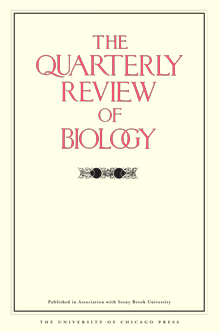:结合人类遗传学和因果推断来理解人类疾病和发展。冷泉港医学观
IF 3.2
2区 生物学
Q1 BIOLOGY
引用次数: 3
摘要
ABO血型,基因型-表型关系,19-20 ACE模型,双胞胎研究,23,32-33,40,53 ACHE,161加性遗传变异,22 ADHD。参见注意力缺陷/多动障碍采用研究设计概述,71优势和局限性,64 ALDH2,28,31,86171 Anacetrapib,193 ANGPTL3,186201 ATP7A,16,19,21,28注意力缺陷/多动症(ADHD),46–48,54,63–67,71–72,240,243本文章由计算机程序翻译,如有差异,请以英文原文为准。
:Combining Human Genetics and Causal Inference to Understand Human Disease and Development. Cold Spring Harbor Perspectives in Medicine
A ABO blood group, genotype–phenotype relationship, 19–20 ACE model, twin studies, 23, 32–33, 40, 53 ACHE, 161 Additive genetic variance, 22 ADHD. See Attention-deficit/hyperactivity disorder Adoption study design overview, 71 strengths and limitations, 64 ALDH2, 28, 31, 86, 171 Anacetrapib, 193 ANGPTL3, 186, 201 ATP7A, 16, 19, 21, 28 Attention-deficit/hyperactivity disorder (ADHD), 46–48, 54, 63–67, 71–72, 240, 243
求助全文
通过发布文献求助,成功后即可免费获取论文全文。
去求助
来源期刊

Quarterly Review of Biology
生物-生物学
CiteScore
11.20
自引率
0.00%
发文量
130
期刊介绍:
The premier review journal in biology, The Quarterly Review of Biology has presented insightful historical, philosophical, and technical treatments of important biological topics since 1926. The QRB publishes outstanding review articles of generous length that are guided by an expansive, inclusive, and often humanistic understanding of biology. Beyond the core biological sciences, the QRB is also an important review journal for scholars in related areas, which include policy studies and the history and philosophy of science. A comprehensive section of reviews on new biological books provides educators and researchers alike with information on the latest publications in the life sciences.
 求助内容:
求助内容: 应助结果提醒方式:
应助结果提醒方式:


